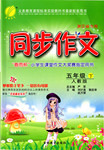题目内容
Players on the China women’s volleyball team hugged and burst into tears ________ they defeated Germany at the 2011 world Cup.
- A.in the second
- B.the second
- C.a second
- D.the seconds

 春雨教育同步作文系列答案
春雨教育同步作文系列答案During his life Dr James Naismith worked as a doctor, taught P.E and wrote several books. While he never thought it very important, Dr Naismith is today best known for one thing. He was the inventor of basketball.
Dr James Naismith was born in Canada in 1861 and his first job was at a special sports school in the USA. One day the school principal told James he was having a problem with the students. Because of heavy snow, the students could not go outside. He told James that they needed a sport the boys could play indoors and gave the teacher two weeks to think of something.
It was on the very last day that James came up with his idea. The “birth of basketball” is said to be on December 21, 1891, when two teams from the school played the first game. It was quite different from the basketball games of today. It had 9 players on each team and footballs were used instead of basketballs. Soon after, the game changed to 5 players on each side, using special “basketballs” through nets.
Although Dr Naismith did not live to see basketball become the worldwide game it is today, in 1936, just three years before his death, basketball became an Olympic sport at the Games in Berlin.
【小题1】
Which of the following things did Dr James Naismith NOT do?
| A.Teach P.E in school. | B.Write some books. |
| C.Work at a hospital. | D.Take part in the Olympic Games. |
In which season did Dr Naismith invent basketball?
| A.Summer. | B.Winter. | C.Spring. | D.Autumn. |
Why is December 21 thought to be the birthday of basketball?
| A.It was on this day that Dr Naismith came up with his idea for basketball. |
| B.It was the day on which Dr Naismith was born. |
| C.It was the day on which Dr Naismith was asked by his boss to invent a new game. |
| D.It was on this day that the first game of basketball was played. |
At the time of Dr Naismith’s death, which of the following was true?
| A.Basketball was already a worldwide game. |
| B.Basketball was played with 9 players on each side. |
| C.Basketball was an Olympic sport. |
| D.Basketball was still played using footballs. |
The word doping is probably from the Dutch word dop, the name of an alcoholic drinks make of grape skins used by Zulu soldiers in order to encourage their bravery in battle. The term became current around the turn of the 20th century, originally referring to illegal drugging of racehorses. In 1928 the International Amateur Athletic Federation (IAAF) became the first to ban the use of doping. A reliable test method was finally introduced in 1974.
The practice of enhancing athletes’ performance through foreign substance or other artificial means, however, is as old as competitive sport itself. The most famous doping case of the 1980s concerned Ben Johnson, the 100-meter champion who tested positive for stanozolol(司坦咗醇) at the Olympic Games in Seoul, 1988.
The main front in the anti-doping war has rapidly shifted to blood doping since 1970s. Blood doping is the practice of adding red blood cells to the bloodstream in order to improve athletes’ performance. The blood is usually processed in order to create a concentration of red blood cells, and then freeze them until needed for transfusion(输血) back into the athlete shortly before the event. The extra red blood cells will deliver more oxygen and other essential elements to the athlete’s muscle tissues.
Just like any other problem, the only way to solve it is through education. Many high school sports programs now have people come in to talk to them about out the dangers of performance-enhancing drugs. Young players must be fully clear on the rules and what substances are banned. The NCAA (National Collegiate Athletic Association) has an easily accessible list of what substances are banned, how they are tested for and why they are banned on its website. This way, young players are clear on what they can put in their bodies. This is also a good way to educate players on the danger of the substances they may be tempted to use.
1.The word “enhancing” in the first sentence of the second paragraph means “_____”.
|
A.showing |
B.directing |
C.upsetting |
D.improving |
2.What can we know from the third paragraph?
|
A.Blood doping is transferring one man’s blood into another |
|
B.Only blood doping exists in the anti-doping war in the 1970s. |
|
C.Blood doping is easy to be found and controlled by organizations. |
|
D.More oxygen in the blood helps improve an athlete’s performance. |
3.The word “people” in the second sentence of the fourth paragraph probably refers to _____.
|
A.teachers who teach P.E. lessons at school |
|
B.experts who do research in doping |
|
C.young people easy to be addicted to doping |
|
D.athletes involved in doping |
4.Which statement best matches the last paragraph?
|
A.Prevention is better than cure. |
|
B.Reading is to the mind what exercise is to the body. |
|
C.The best horse needs breaking, and the cleverest child needs teaching. |
|
D.A little learning is a dangerous thing. |
27.Soccer is played on a large rectangular field by________eleven players on each team.
|
A.No fewer than |
B.no less than |
C.not fewer than |
D.not less than |